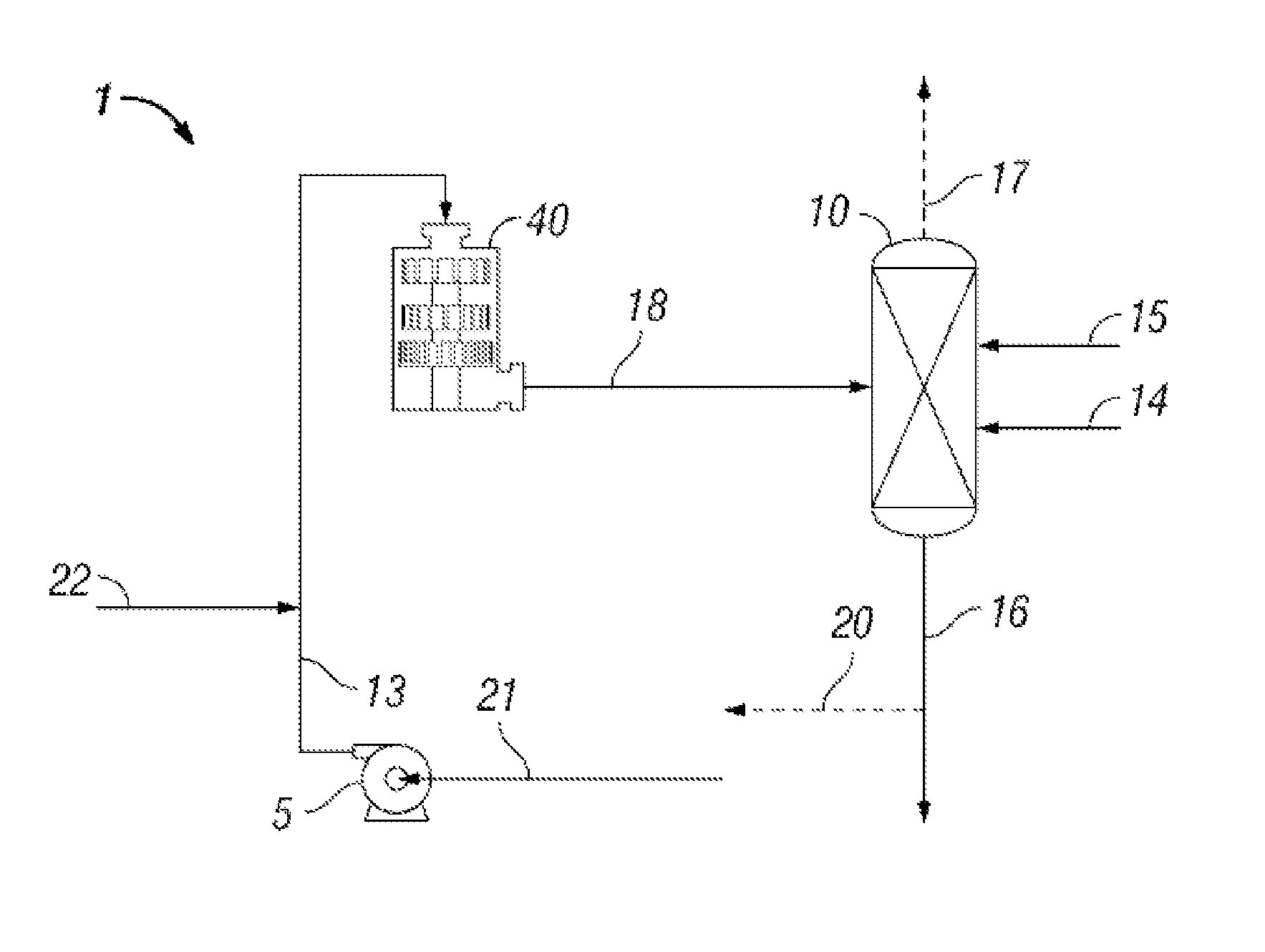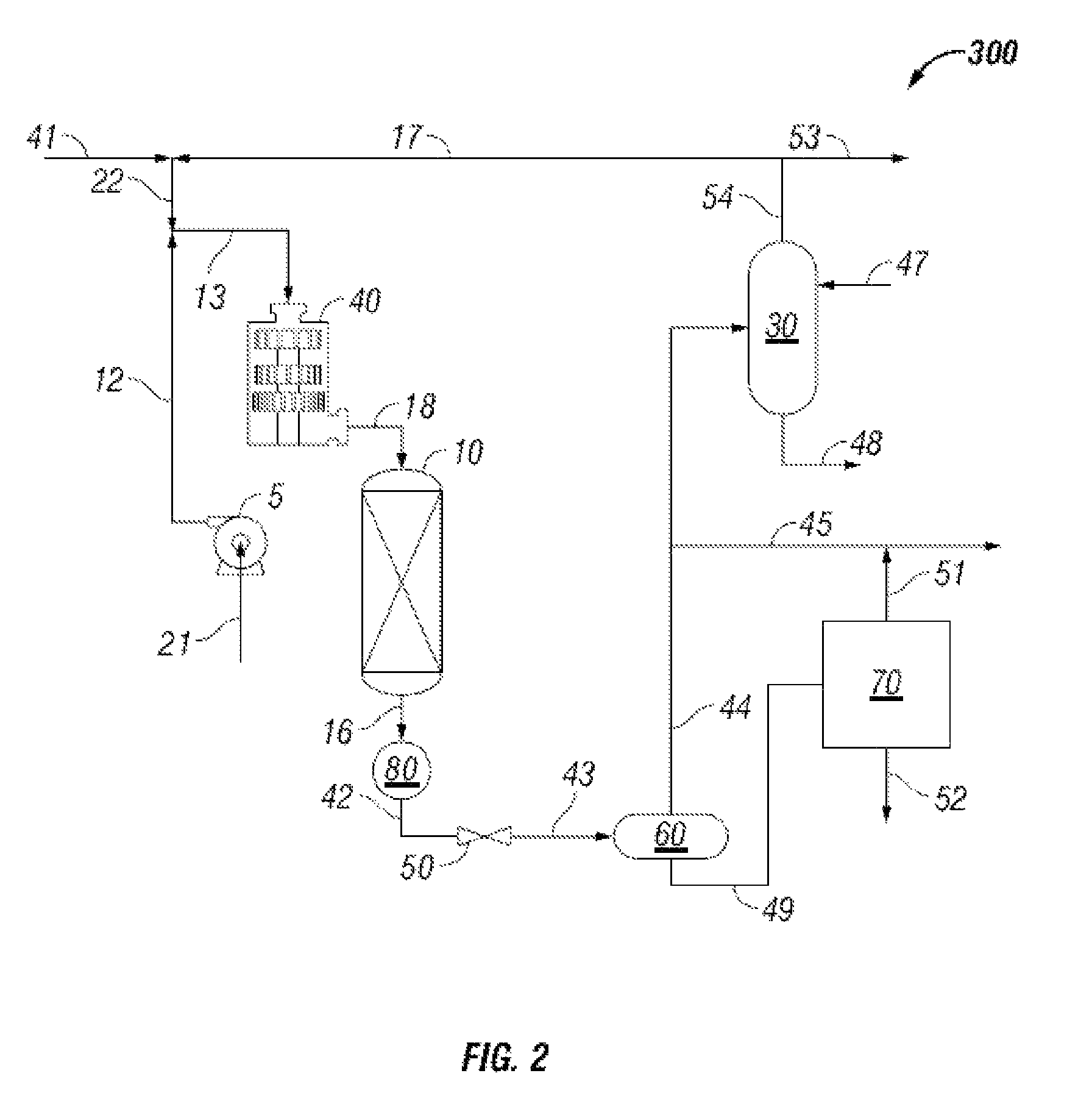Process for hydrodesulfurization, hydrodenitrogenation, hydrofinishing, or amine production
a technology of hydrodenitrogenation and amine, which is applied in the direction of hydrocarbon oil treatment products, separation processes, centrifuges, etc., can solve the problems of inability to scale up to large fluid volumes, ineffective removal of sulfur-containing compounds having certain chemical structures, and high cost of methods and systems for removing sulfur-containing compounds from carbonaceous fluids. achieve the effect of reducing overall cost, increasing the rate of multi-phase process, and increasing catalyst product per unit of catalyst consumed
- Summary
- Abstract
- Description
- Claims
- Application Information
AI Technical Summary
Benefits of technology
Problems solved by technology
Method used
Image
Examples
Embodiment Construction
Overview
[0036]The rate of chemical reactions involving liquids, gases and solids depend on time of contact, temperature, and pressure. In cases where it is desirable to react two or more raw materials of different phases (e.g. solid and liquid; liquid and gas; solid, liquid and gas), one of the limiting factors controlling the rate of reaction involves the contact time of the reactants. In the case of heterogeneously catalyzed reactions there is the additional rate limiting factor of having the reacted products removed from the surface of the catalyst to permit the catalyst to catalyze further reactants. Contact time for the reactants and / or catalyst is often controlled by mixing which provides contact with two or more reactants involved in a chemical reaction.
[0037]A reactor assembly that comprises an external high shear device or mixer as described herein makes possible decreased mass transfer limitations and thereby allows the reaction to more closely approach kinetic limitations...
PUM
| Property | Measurement | Unit |
|---|---|---|
| mean diameter | aaaaa | aaaaa |
| speed | aaaaa | aaaaa |
| speed | aaaaa | aaaaa |
Abstract
Description
Claims
Application Information
 Login to View More
Login to View More - R&D
- Intellectual Property
- Life Sciences
- Materials
- Tech Scout
- Unparalleled Data Quality
- Higher Quality Content
- 60% Fewer Hallucinations
Browse by: Latest US Patents, China's latest patents, Technical Efficacy Thesaurus, Application Domain, Technology Topic, Popular Technical Reports.
© 2025 PatSnap. All rights reserved.Legal|Privacy policy|Modern Slavery Act Transparency Statement|Sitemap|About US| Contact US: help@patsnap.com



